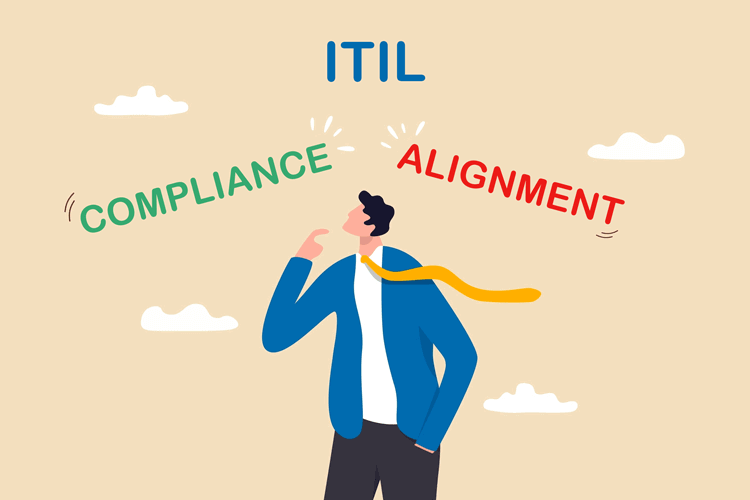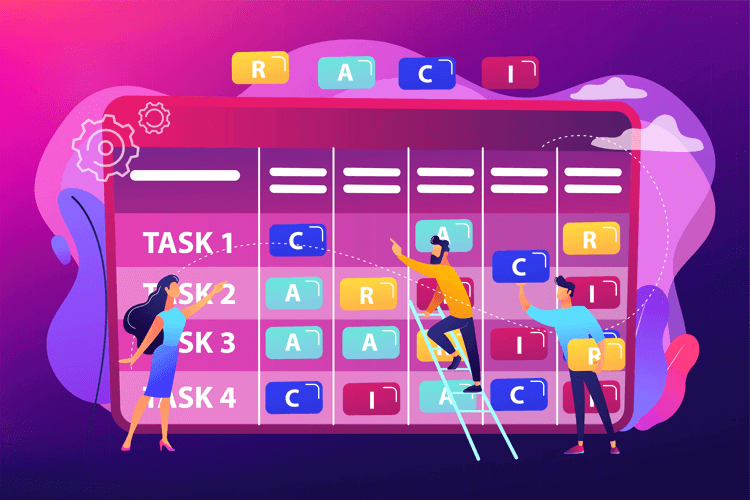What Is an IT Operating Model, and Why Does “Everyone” Need One?
New and seasoned businesspeople know that a well-thought-out business model and strategy are two key ingredients needed to create a successful company.
However, something discussed less frequently is an operating or operational model. This outlines important details about a company, including those regarding employees, processes, systems and technology.

Operating Model Definition
An operational model is a visualization, or model, that illustrates the inner workings of an organization. It includes essential elements needed to operate a business, such as how a company sources its products, structures departments, and delivers value to its customers or clients. Operating models play a vital role in virtually every type of business.
People sometimes mix up the terms operational model and business model. Though they are similar, they serve different purposes and outline various things.
A business model describes how a company captures and offers value to its customers through products or services, while an operating model specifies how it delivers it. Simply put, a business model is the "what" of a company and an operating model is the "how".
Foundational Classifications for Today's Operating Models
How did today's business operational models evolve? Bruce Scott, a Harvard Business School professor, spent time researching corporate strategy and developed a model of the stages of corporate development. Soon after, Leonard Wrigley and Richard Rumelt followed Scott's path and created ways to classify business structures so they could compare the strategies of multiple companies.
Here are Wrigley and Rumelt's four classifications:
- Revenue comes from one activity
- Additional business complements the original activity
- Diversified firms combine unrelated businesses
- Conglomerates, unrelated to synergistic or complementary effects
These four elements were essentially the foundation for today's operational models but currently go by different names. They are:
- Integrated
- Allied-related
- Allied-unrelated
- Holding company
Types of Operational Models
Developing and implementing the right operation model for a business is bedrock to its success. There are four primary types of operating models, including:
- Coordination (seamless access to shared data among business units in a company)
- Unification (business units are integrated based upon standardized, integrated processes)
- Diversification (different business units offering different products and services to different customers)
- Replication (business units function independently but operations are run in a highly standardized format)
Elements of Operating Models
No two organizations will have the same operational model but, to be effective, there are a handful of standard elements that should always be included. Those key components are:
- Strategy
- Systems/processes
- Organizational structure
- Talent
- Technology/data
These five basic areas are critical in developing a solid operational model, but organizations can still include additional core business functions.
One inherent benefit of an operational model is that it's a living document subject to change. Whether it's making adjustments in the company's structure or a set of process improvements, it's rare for an organization to maintain a single operating model throughout its life cycle.
Two Approaches to Operating Models
Organizations can follow one of two approaches to operating model development: role-based or process-based. As their names suggest, a role-based approach designs a model by looking at the hierarchy of roles in the organization. Process-based focuses on the journey of delivering value to the customer.
Additionally, the Service Operating Model Skills (SOMS) framework and IT operating models are things a company might need. According to Wikipedia, "SOMS is an operating model focused on the service sector. SOMS stipulates the expertise needed for people creating and working with operating models." While the SOMS framework is particularly useful for companies in the services sector, the IT operating model (discussed below) applies to any industry.
What is an IT Operating Model and Why Does Every Business Need One?
An IT operating model's main purpose is to help companies make wise IT investment decisions. However, it also informs employees and stakeholders about standard business processes and helps IT professionals design various technical and IT-related components.
Everyone needs an IT operational model because the cybersecurity landscape is evolving. New threats are emerging, and bad actors are becoming more sophisticated in their attacks. Some of the most common hacking threats are phishing, malware, distributed denial of service (DDoS) and social engineering.
Organizations with a clear IT operating model can see the inner workings of their departments and determine if any improvements are needed as cybersecurity threats become more prevalent.
Specific Elements of an Effective IT Operational Model
Because IT operational models are unique to an individual company's IT department, more specific elements must be included.
Here are four essential components of an IT operating model:
- Processes
- Governance
- Sourcing
- Structure
IT operating models are single, snapshot views of an IT department. They also act as interfaces between business and IT and outline standard functions and processes.
How to Create an IT Operating Model
Creating an IT operating model might seem daunting at first. However, companies should take two crucial steps to successfully build next-generation operating models. These are:
- Focus on putting in place building blocks to drive widespread change across the entire organization
- Select a transformation path that suits their unique situation
Ultimately, the goal is to implement an effective operating model to deliver value while also significantly reducing costs.
If you're looking to develop a suitable model for your business, you're in the right place. Here are the steps outlining how to create an IT operating model using the four components listed above.
-
Processes
In this step, you should identify IT processes, determine their objectives and create a set of outputs to help the department achieve its goals. Every company differs, so IT processes will vary. They might be formal or informal or involve different types or a specific number of stakeholders.
-
Governance
The next step is governance, which involves reviewing stakeholder needs, conditions and options that help create the IT department's objectives. It also gives employees direction so they can prioritize goals, improve decision-making and continuously monitor performance.
-
Sourcing
This step involves identifying the optimal sourcing models to create, deliver, and support technology products and services. The sourcing step breaks down into three broad categories, including insourcing, co-sourcing and outsourcing.
Sourcing is crucial for IT professionals, as it determines which processes are performed in-house or by a third party. It is well-known that an organization is only as resilient as the vendors it relies on — skipping this step could cause future issues within the IT department.
-
Structure
All employees need structure within the department, which is accomplished through IT modeling. The operational structure should include roles, authority, responsibilities and methods of communication. With a clear understanding of the structure, an IT operating model will help employees find their place in the department.
These components enable the IT department to deliver tech services to its customers in ways that align with the organization's strategy and match consumer needs.
Hiring a Consultant for Operational Modeling
Some companies will hire third-party consultants to assist them with developing a suitable operational model. For example, large corporations might face more challenges in the modeling process because of their size. However, a small startup might lack the expertise to create an effective operational model.
Various companies, such as McKinsey, Bain & Co. and Accenture, typically offer relevant consulting services. The right operating model will provide your company with an efficient, integrated system. Essentially, these models ensure your teams are aligned, competent, efficient, inspired and adaptable.
Final Word on the Operating Model
Operational models, IT-related or otherwise, can be a major boon to organizations. It can be challenging to keep up with trends in today's fast-paced environment. If you are a business owner or a C-suite executive, you know how quickly things change within your company, regardless of the industry it serves. Operating models allow you to stay abreast of these changes, make informed decisions and enable your team to perform at the top of its game.






